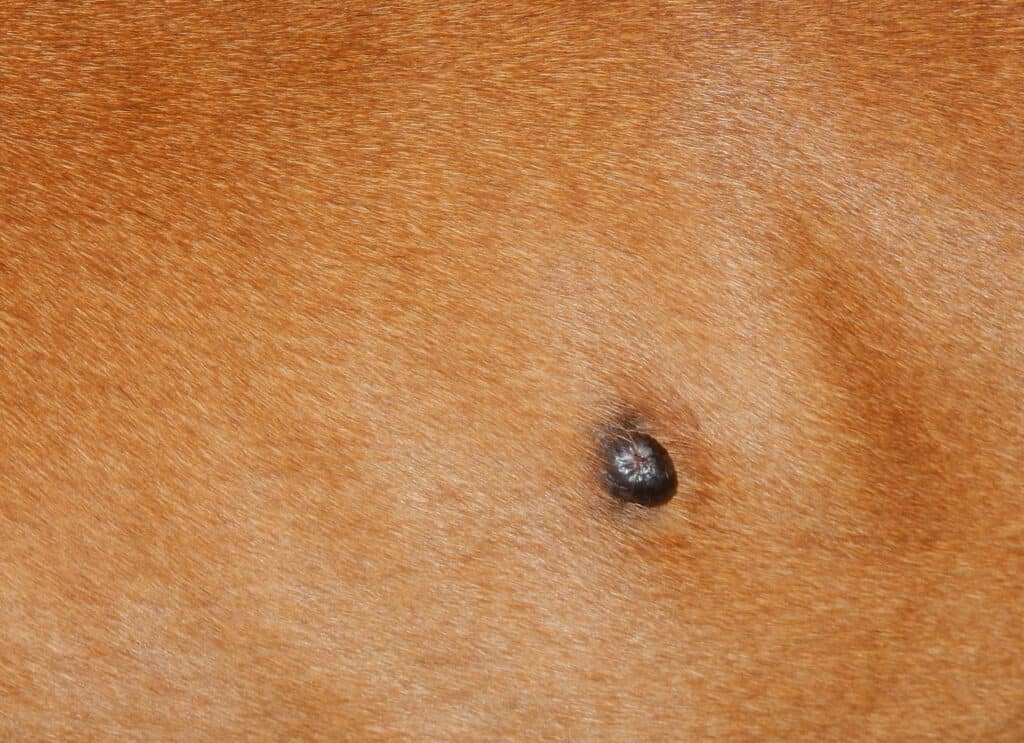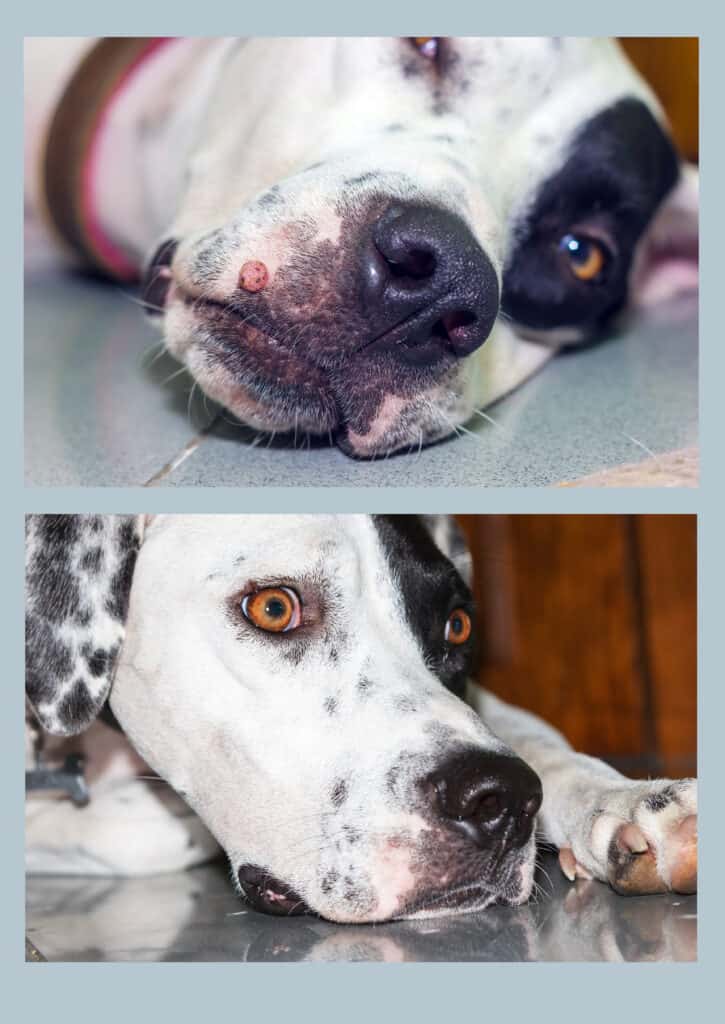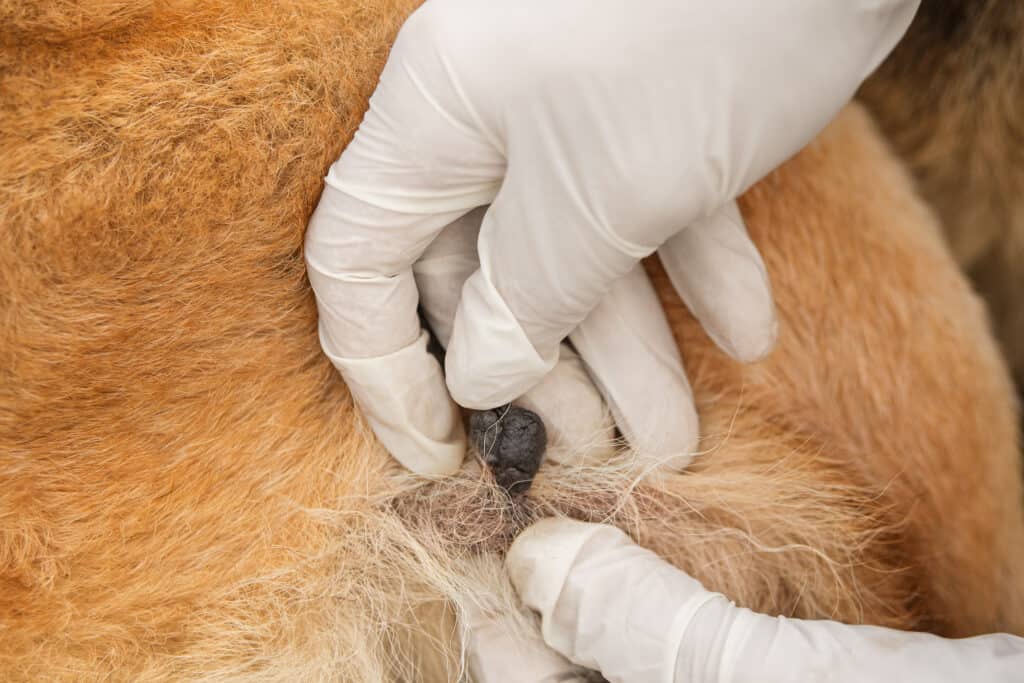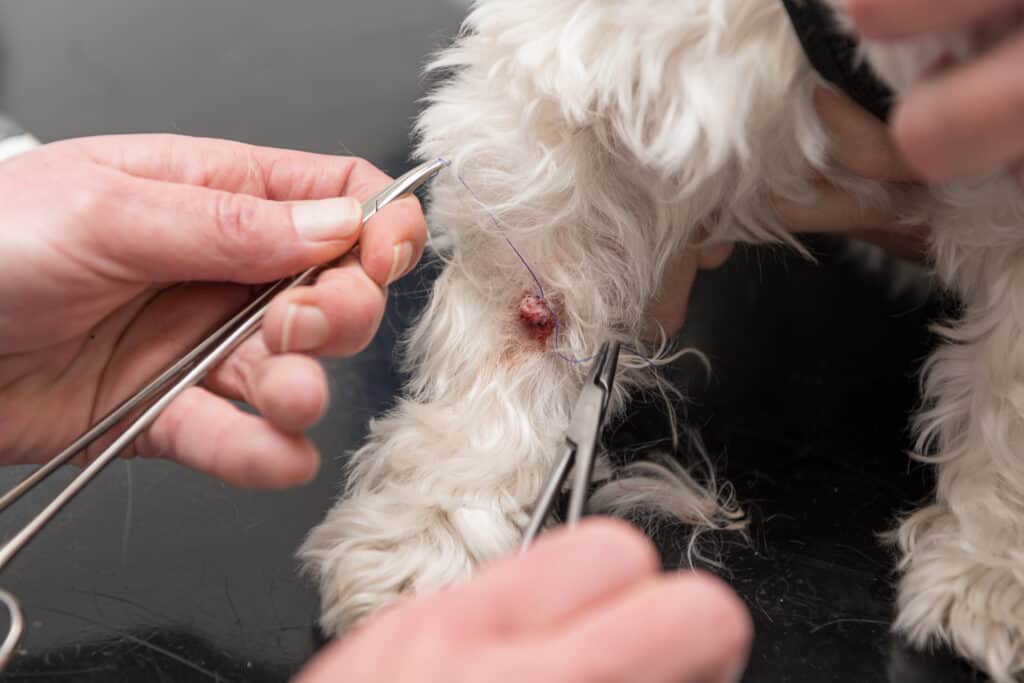Many of us are familiar with the wart-causing virus that often spreads through children in school or daycare settings. We know that warts impact humans, but you may be surprised to learn that dogs can become infected with a warts-causing virus as well. The virus that spreads warts to dogs is not the same as the one found in humans, but it impacts our furry friends similarly.
To make sure you know how to handle the presence of warts on your dog’s skin, let’s discuss everything you need to know about the canine papilloma virus! We’ll discuss what the virus looks like, how the virus spreads, and how you can banish these unsightly growths for good.
What Are Warts?
Before we dive into the details, we should first introduce you to what a wart is in the first place. A wart is a benign growth that presents anywhere on the skin, and it can range in color from light pink to shades of darker pigment. Warts may start off as tiny, uniform growths, but they can also transform into cauliflower-like nodules over time. Some warts will even have dark spots within the growth.
Can Dogs Get Warts? If So, What Causes Them?
Just like humans, dogs can develop warts on their skin. They are actually quite common in the young dog population, especially those that spend time around other dogs in public settings. They are typically caused by contagious viruses in the papilloma family, and they most often infect young dogs with compromised immune systems, or those that have frequent contact with unfamiliar dogs.
These warts are often highly contagious, and the viruses themselves can live for long periods in the right environment. Contagious wart viruses spread through direct contact, especially when these warts come in contact with injured skin. The virus thrives in damp environments such as cuts or skin sores, and this offers the virus direct access to the body. Some dogs will also catch a papilloma virus when they come in contact with contaminated surfaces such as bedding, food and water bowls, and dog brushes.
It’s also important to note that most wart viruses in dogs have a two-month incubation period, which means it takes two months for the wart to develop after the dog is exposed. This means that if you have any other dogs in the home along with your infected furry friend, they too have likely been exposed to the virus during the incubation period. Your dog should keep away from public settings until after treatment.

Just like humans, dogs can develop warts on their skin.
©iStock.com/Chellym
Where Do Warts Grow on Dogs?
Dogs can develop warts anywhere on the body, but the most common areas are around the mouth, near the eyes, and on the nose. This will also vary based on the type of virus they were infected with, as dogs can also spread venereal warts that grow in their genital area. It’s also important to note that while some viruses will cause one or two warts in a single region, others will lead to an eruption of several warts. Overall, we suggest monitoring all parts of your dog’s body for any strange new lumps or bumps.

One of the most common areas for a dog to develop a wart is around the mouth.
©iStock.com/Nelladel
Can Dogs Spread Warts to Humans?
Fortunately, your dog will not be able to spread warts to you. The papilloma virus that impacts dogs is species-specific, which means it can only spread from dog to dog. If you notice the development of any warts on your own body, your canine friend is not to blame.

The papilloma virus in dogs is not contagious to humans.
©iStock.com/Andrii Medvediuk
Should My Dog with Warts See the Vet?
We always suggest vet care when you notice a new growth on your pet’s skin, and this includes canine warts as well. While most growths are benign and will not cause them any harm, there are some types of skin cancer in dogs that can mimic warts in their early stages. You never want to assume that a growth on your dog is benign if it is actually something harmful.
In many cases your vet can determine whether or not their growth is a wart during their physical exam, but some growths can be difficult to diagnose with a simple assessment. If this is the case for your pup, your vet can either do a fine needle aspirate (puncturing the growth with a needle and examining the internal cells with a microscope), or they can remove the growth and send it to a lab for biopsy. Your vet can then determine the best plan of action based on the test results.
If your vet is certain that your pet’s growth is indeed a wart, then they can move forward with a standard treatment plan. To make sure you are aware of the possibilities that lie ahead for your pup, let’s break down the most common treatment options!

Dog warts can range in color from light pink to shades of darker pigment.
©iStock.com/Snizhana Galytska
How to Treat Warts in Dogs
If your vet diagnoses your dog with this skin condition, then there are a couple routes they can take moving forward. First, your vet may simply suggest leaving it alone to see if the body will take care of the wart virus in its own. Many growths will clear up without treatment in one to two months, and your pup will not require any additional treatment. We suggest avoiding any interaction with dogs outside of your home until the issue resolves, as the papilloma virus in dogs is highly contagious.
If your dog has multiple warts or has a wart that has been causing complications, then your vet will likely recommend surgical removal. This is especially true if it is in an area that your dog is irritating often, as this can lead to frequent bleeding or even infection in the area. Surgical removal of the wart is often effective in eliminating it, and most warts will not grow back.
If your pet is going to develop another wart after their surgery, then we would expect to see another one within the two-month incubation period. While this is quite rare in dogs, this can happen in those with a compromised immune system. If this is the case, we suggest continued veterinary care. Your vet might have a different plan of action the next time around to address their impaired immune function, or they may weigh the risks of leaving the wart untreated.

Surgical removal of the wart is often effective in eliminating it, and most warts will not grow back.
©iStock.com/K_Thalhofer
Final Thoughts On Dog Warts
Warts in canines are fairly common, and they spread through contact with some form of canine papilloma virus. They are highly contagious, and most often seen in dogs that go to dog parks, doggy day care, and other settings that see a high volume of dogs. If you ever see a growth that could be a wart on your canine companion, we always suggest bringing them to the vet for a proper diagnosis. Once they confirm that the growth on your dog is indeed a wart, they can determine the best plan of action moving forward.
Up Next:
The photo featured at the top of this post is © iStock.com/Todorean Gabrielle
Ready to discover the top 10 cutest dog breeds in the entire world?
How about the fastest dogs, the largest dogs and those that are -- quite frankly -- just the kindest dogs on the planet? Each day, AZ Animals sends out lists just like this to our thousands of email subscribers. And the best part? It's FREE. Join today by entering your email below.
Thank you for reading! Have some feedback for us? Contact the AZ Animals editorial team.






